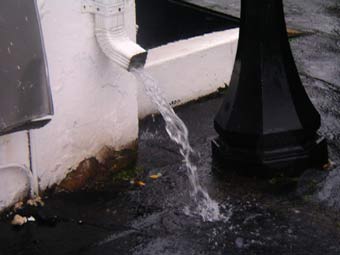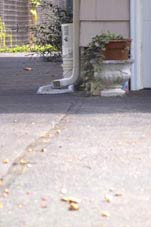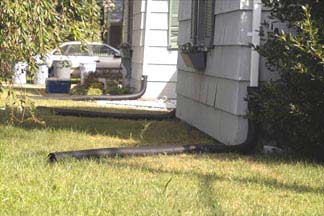Your home's roof, like pavement, is an impervious surface. Impervious surfaces are hard surface areas that either prevent or impede the natural entry and percolation of rain water into the ground. Rooftops, streets, parking lots, driveways, sidewalks, asphalt and concrete are all examples of surfaces that are impervious. Impervious surfaces alter the natural infiltration of water, create more runoff, and increase the rate of runoff; resulting in increased transport of pollutants via stormwater into our local waters.
Rainwater runs off of buildings and is typically collected in roof gutters, which then discharge to a downspout. If downspouts from roof gutters empty onto another paved surface, like your driveway, the water will then flow directly into the street and storm drains, carrying all pollutants that it picks up along the way to our local waterbodies.

Aiming downspouts away from foundations and paved surfaces breaks up the connection between impervious surfaces, allowing some of this runoff to infiltrate into the ground.

An example of flow directed to a vegetated area is shown below. Extension hoses redirect stormwater from your roof to your lawn, allowing infiltration of stormwater and the pollutants that have been gathered.

Next is one of the most important and one of the simplest BMPs you can implement around the home - Proper Pet Care!